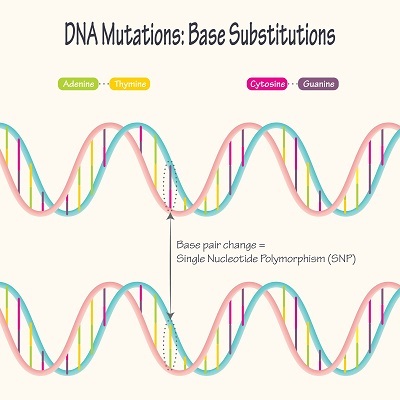
 Data Structure
Data Structure Networking
Networking RDBMS
RDBMS Operating System
Operating System Java
Java MS Excel
MS Excel iOS
iOS HTML
HTML CSS
CSS Android
Android Python
Python C Programming
C Programming C++
C++ C#
C# MongoDB
MongoDB MySQL
MySQL Javascript
Javascript PHP
PHP
- Selected Reading
- UPSC IAS Exams Notes
- Developer's Best Practices
- Questions and Answers
- Effective Resume Writing
- HR Interview Questions
- Computer Glossary
- Who is Who
What are Different Types of Mutagenesis?
Introduction
Mutagenesis refers to the process of inducing mutations in  the genetic material of an organism. Mutations are changes that occur in the DNA sequence, either naturally or through the use of mutagens. These changes can lead to alterations in the phenotype of an organism, which may be beneficial, detrimental or have no effect at all. Mutagenesis is an important tool in genetic research, allowing scientists to study the effects of specific mutations on gene function, and to identify genes involved in specific biological processes.
the genetic material of an organism. Mutations are changes that occur in the DNA sequence, either naturally or through the use of mutagens. These changes can lead to alterations in the phenotype of an organism, which may be beneficial, detrimental or have no effect at all. Mutagenesis is an important tool in genetic research, allowing scientists to study the effects of specific mutations on gene function, and to identify genes involved in specific biological processes.
Chemical Mutagenesis
Chemical mutagenesis involves the use of chemicals to induce mutations in the DNA of an organism. Chemical mutagens can act by a variety of mechanisms, including base substitution, frameshift, and DNA strand breaks. Examples of chemical mutagens include alkylating agents, such as ethyl methanesulfonate (EMS), which add alkyl groups to DNA bases, causing base substitution mutations. Nitrosoguanidine is another example of a chemical mutagen that causes base substitution mutations. Chemical mutagenesis is a useful tool for generating large numbers of random mutations in a short period of time. However, it can also lead to a high frequency of non-specific mutations, making it difficult to identify the specific mutations responsible for a particular phenotype.
Radiation Mutagenesis
Radiation mutagenesis involves the use of ionizing radiation, such as X-rays or gamma rays, to induce mutations in the DNA of an organism. Radiation can cause DNA damage by ionizing molecules in the cell, leading to strand breaks, base damage, and other types of DNA damage. Radiation mutagenesis is a useful tool for generating large numbers of mutations in a short period of time. However, it can also cause a high frequency of non-specific mutations, making it difficult to identify the specific mutations responsible for a particular phenotype. In addition, radiation mutagenesis can be hazardous to researchers, and precautions must be taken to prevent exposure to radiation.
Site-Directed Mutagenesis
Site-directed mutagenesis involves the targeted introduction of specific mutations into a gene of interest. This technique is particularly useful for studying the effects of specific mutations on gene function. Site-directed mutagenesis can be performed using a variety of methods, including PCR-based mutagenesis and oligonucleotide-directed mutagenesis. PCR-based mutagenesis involves the use of PCR to amplify a gene of interest, with modified primers that introduce specific mutations into the amplified product. Oligonucleotide-directed mutagenesis involves the use of synthetic oligonucleotides to introduce specific mutations into a gene of interest. Site-directed mutagenesis is a useful tool for studying the effects of specific mutations on gene function, but it can be time-consuming and labor-intensive.
Transposon Mutagenesis
Transposon mutagenesis involves the use of transposable elements, or transposons, to randomly insert DNA sequences into the genome of an organism. Transposons are mobile genetic elements that can move from one location to another within the genome. They can be used as mutagens by introducing new DNA sequences into the genome, disrupting gene function, or causing changes in gene regulation. Transposon mutagenesis is a useful tool for identifying genes involved in specific biological processes, as well as for studying the effects of random mutations on gene function. However, it can also lead to a high frequency of non-specific mutations, making it difficult to identify the specific mutations responsible for a particular phenotype.
Conclusion
Mutagenesis is a powerful tool for studying the effects of mutations on gene function and identifying genes involved in specific biological processes.
There are several types of mutagenesis, each with its own advantages and disadvantages. Chemical mutagenesis and radiation mutagenesis are useful for generating large numbers of random mutations but can also lead to a high frequency of non-specific mutations. Site-directed mutagenesis is useful for studying the effects of specific mutations on gene function but can be time-consuming and labor-intensive.
Transposon mutagenesis is useful for identifying genes involved in specific biological processes but can also lead to a high frequency of non-specific mutations. CRISPR-Cas9 mutagenesis allows for precise targeting of specific mutations but requires specialized equipment and expertise.
Overall, the choice of mutagenesis method depends on the specific research question and the resources available to the researcher.
FAQs
Q1. What is mutagenesis?
Ans. Mutagenesis is the process of inducing mutations in the genetic material of an organism.
Q2. What are the different types of mutagenesis?
Ans. The different types of mutagenesis include chemical mutagenesis, radiation mutagenesis, site-directed mutagenesis, transposon mutagenesis, and CRISPR-Cas9 mutagenesis.
Q3. What is chemical mutagenesis?
Ans. Chemical mutagenesis involves the use of chemicals to induce mutations in the DNA of an organism.
Q4. What is radiation mutagenesis?
Ans. Radiation mutagenesis involves the use of ionizing radiation, such as X-rays or gamma rays, to induce mutations in the DNA of an organism.
Q5. What is site-directed mutagenesis?
Ans. Site-directed mutagenesis involves the targeted introduction of specific mutations into a gene of interest.
Q6. What is transposon mutagenesis?
Ans. Transposon mutagenesis involves the use of transposable elements, or transposons, to randomly insert DNA sequences into the genome of an organism.

